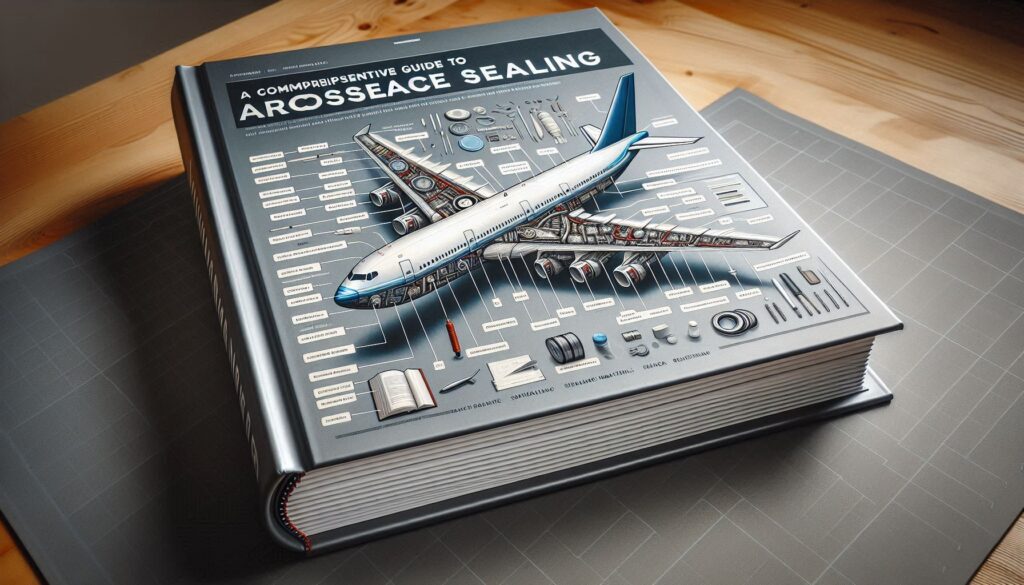In the aerospace industry, where safety, reliability, and performance are paramount, the importance of high-quality seals cannot be overstated. Seals in aerospace applications must withstand extreme temperatures, high pressures, and aggressive chemicals while maintaining their integrity and performance over extended periods. This guide explores seals’ critical role in aerospace, their unique challenges, and the advanced materials and designs that make them indispensable in the industry.

The Critical Role of Seals in Aerospace
Aerospace seals are crucial in various systems, including engines, fuel, hydraulic, and environmental control systems. Their primary functions include:
- Preventing Leaks: Seals avoid the leakage of fluids (such as fuel, oil, and hydraulic fluids) and gases (such as air and nitrogen), ensuring the proper functioning of systems and preventing environmental contamination.
- Maintaining Pressure: Seals help maintain the necessary pressure levels for optimal performance in high-pressure systems, such as hydraulic and fuel systems.
- Excluding Contaminants: Seals keep contaminants (such as dust, dirt, and moisture) out of critical systems, protecting sensitive components from damage.
- Reducing Friction and Wear: Seals minimize friction and wear by providing a barrier between moving parts, extending the lifespan of components and improving efficiency.
Unique Challenges in Aerospace Sealing
Seals in aerospace applications face several unique challenges that require advanced materials and designs:
1. Extreme Temperatures
Aerospace seals must operate in a wide range of temperatures, from the freezing conditions of high altitudes to the extreme heat of jet engines. Materials must maintain their properties and performance across this temperature spectrum.
2. High Pressures
Seals in hydraulic and fuel systems must withstand high pressures without deforming or failing. This requires materials with high strength and elasticity.
3. Chemical Exposure
Aerospace seals are exposed to aggressive chemicals, including hydraulic fluids, fuels, lubricants, and cleaning agents. They must resist chemical degradation to maintain their integrity and performance.
4. Vibration and Movement
Aircraft components are subject to constant vibration and movement. Seals must be flexible and durable enough to accommodate these dynamic conditions without losing their sealing capabilities.
5. Weight Considerations
In aerospace applications, every gram counts. Seals must provide excellent performance without adding unnecessary weight to the aircraft.
Advanced Materials for Aerospace Seals
To meet these demanding requirements, aerospace seals are made from advanced materials designed for high performance:
1. Fluorocarbon (FKM/Viton®)
Fluorocarbon elastomers are known for their excellent heat and chemical resistance. They are commonly used in fuel and hydraulic systems with high temperatures and aggressive chemicals.
2. Polytetrafluoroethylene (PTFE)
PTFE offers exceptional chemical resistance and low friction, making it ideal for dynamic sealing applications. It can also withstand high temperatures, making it suitable for engines and other high-heat environments.
3. Silicone
Silicone seals provide excellent flexibility and heat resistance and are suitable for various temperatures. They are often used in environmental control systems and other applications where temperature fluctuations are typical.
4. Ethylene Propylene Diene Monomer (EPDM)
EPDM is known for its excellent resistance to weathering, ozone, and aging. It is often used in environmental control systems and other applications exposed to harsh environmental conditions.
5. Polyether Ether Ketone (PEEK)
PEEK is a high-performance thermoplastic with excellent mechanical strength and chemical resistance. It is used in applications where high strength and durability are required.
Types of Aerospace Seals
There are various types of seals used in aerospace applications, each designed for specific functions:
1. O-Rings
O-rings are versatile seals used in a wide range of aerospace applications. They provide a reliable seal in static and dynamic conditions and are available in various materials to suit different requirements.
2. Gaskets
Gaskets seal the space between two mating surfaces, preventing leaks and maintaining pressure. They are commonly used in engine components, fuel systems, and hydraulic systems.
3. Lip Seals
Lip seals are used in dynamic applications to prevent fluid leakage and exclude contaminants. They are often used in hydraulic systems, engines, and gearboxes.
4. Radial Shaft Seals
Radial shaft seals seal the rotating shafts of engines and other machinery. They provide a barrier against fluids and contaminants while allowing the shaft to rotate freely.
5. Face Seals
Face seals provide a seal between two flat surfaces, preventing leaks and maintaining pressure. They are used in various applications, including fuel and hydraulic systems.
Conclusion
Aerospace seals are critical components that ensure aircraft systems’ safety, reliability, and performance. They face unique challenges, including extreme temperatures, high pressures, chemical exposure, and constant vibration. Aerospace seals are made from advanced materials such as fluorocarbon, PTFE, silicone, EPDM, and PEEK to meet these challenges. By selecting suitable materials and designs, aerospace engineers can ensure that seals provide reliable performance in the most demanding conditions, contributing to the aircraft’s overall safety and efficiency.
For more information on aerospace seals and to explore the range of sealing solutions available, visit Advanced EMC Technologies.

